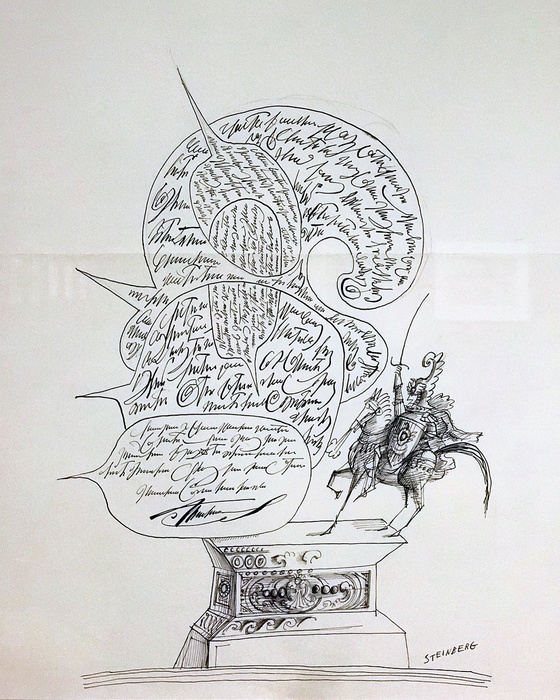.jpg)
In 1946, he was included in the critically acclaimed "Fourteen Americans" show at The Museum of Modern Art, New York, exhibiting along with Arshile Gorky, Isamu Noguchi, and Robert Motherwell, among others. Steinberg went on to have more than 80 one-artist shows in galleries and museums throughout the US, Europe, and South America. He was affiliated with the Betty Parsons and Sidney Janis galleries in New York and the Galerie Maeght in Paris. Since 1982, he has been represented by The Pace Gallery. A dozen museums and institutions have in-depth collections of his work, and examples are included in the holdings of more than eighty other public collections.
Steinberg's long, multifaceted career encompassed works in many media and appeared in different contexts. In addition to magazine publications and gallery art, he produced advertising art, photoworks, textiles, stage sets, and murals. Given this many-leveled output, his work is difficult to position within the canons of postwar art history. He himself defined the problem: "I don't quite belong to the art, cartoon or magazine world, so the art world doesn't quite know where to place me."
He is best described as a "modernist without portfolio, constantly crossing boundaries into uncharted visual territory. In subject matter and styles, he made no distinction between high and stoned (low) art, which he freely conflated in an oeuvre that is stylistically diverse yet consistent in depth and visual imagination."
After Steinberg's death on May 12, 1999, The Saul Steinberg Foundation was established in accordance with the artist's will. The Foundation's mission is "to facilitate the study and appreciation of Saul Steinberg's contribution to 20th-century art" and to "serve as a resource for the international curatorial-scholarly community as well as the general public".
Full details of Steinberg's life and career are presented on the website of The Saul Steinberg Foundation.


.jpg)
Comments